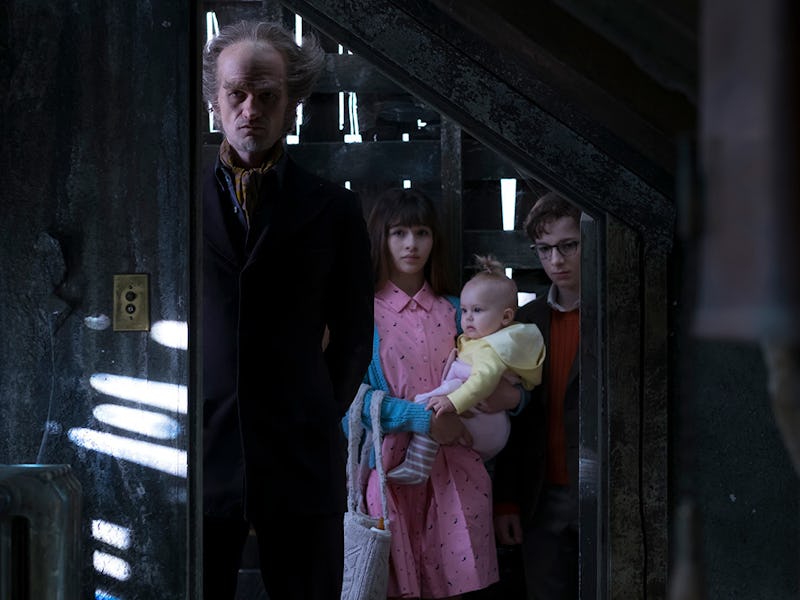Netflix's 'Series of Unfortunate Events' Must Combat Nostalgia
'Gilmore Girls: A Year in the Life' proved that nostalgia TV doesn't always work. Here's why 'A Series of Unfortunate Events' is different.

It is a truth universally acknowledged that a piece of entertainment you loved as a kid does not always remain a fun watch in adulthood. Such was the case with Netflix’s Gilmore Girls: A Year in the Life. When the show’s core audience watched Rory’s adventures, she seemed plucky and charming to an adolescent audience. When A Year in the Life picked up in 2017, Rory seemed blind to her privilege, ungrateful, and even obnoxious. Netflix’s newest nostalgia-fueled project — resurrecting Lemony Snicket’s A Series of Unfortunate Events ten years after the novels were published — will ask another audience to return to something they once enjoyed.
The bestselling book series of the same name came out in between 1999 and 2006, and its truly unfortunate movie adaptation was released in 2004. The books follow orphans navigating a world filled with corrupt adults, and their core audience first experienced the story during their own childhood and teen years. They’re fun and relatable to a young audience, but some aspects — like the Baudelaire orphans’ Taken-like set of skills, or the in-world narrator telling the story — might come across as twee onscreen.
Luckily, unlike the Gilmore Girls revival, the Netflix series is self-aware enough to adapt to changing times. Where Gilmore Girls tried to get with the times by tossing in clumsy references to modern phenomena like Uber, A Series of Unfortunate Events uses the format of having a Rod Serling-esque narrator to make winking asides. So far, the Unfortunate Events ads have mocked the practice of Netflix streaming and have made sly references to modern politics.
Rory’s character aside, Gilmore Girls: A Year in the Life flubbed its landing further, demonstrating a laughably skewed idea of how entire industries work, like modern journalism. The show awkwardly shoehorned a more diverse cast into the background of Stars Hollow too, updating characters for the contemporary push for diversity. These changes felt simultaneously self-conscious and painfully lacking in nuance.
A Series of Unfortunate Events, on the other hand, has a cast that is nonchalantly racially diverse — far more than the novels or the 2004 movie were. It admittedly has an easier job than Gilmore Girls, as its absurdist, Wes Anderson-like world is far less beholden to the rules of reality. Nonetheless, where Gilmore Girls came across as willfully ignorant about freelance journalists having funds to fly to London or getting book deals, A Series of Unfortunate Events’s approach feels like the show knows how things like journalism work, and is simply satirizing it.
For example, the show gives a nod to the current day Oscar race — in which straight, white, able-bodied actors are repeatedly called “brave” for playing gay, transgender, or disabled characters. A reporter says to an actor, “Taking the role of a handsome man was certainly a brave choice. Was that a stretch for you?” And while A Series of Unfortunate Events does not directly acknowledge the relationship between Donald Trump and a press that does not know how to handle such a figure, at another point a reporter asks, “How do you respond with the allegation that this entire thing is nothing more than an evil plot?”
Like the Gilmore Girls revival, A Series of Unfortunate Events has the potential to stick its landing in a most unfortunate and pleasant way. Luckily it’s self-aware enough to adapt and even improve upon its source material. Whether or not you read the books in childhood, the series is wickedly fun for all ages.
Netflix’s A Series of Unfortunate Events comes out on January 13th.